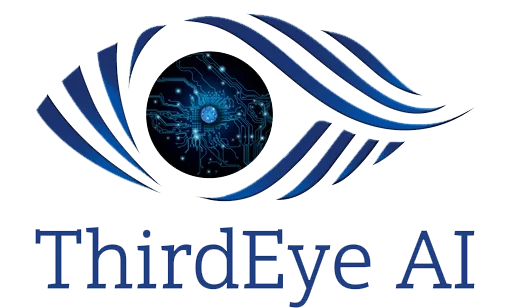In today’s fast-paced digital world, businesses are increasingly turning to AI-driven technologies to boost security, efficiency, and customer experience. Among the most transformative solutions is face recognition technology, which is now being adopted at a global level. From securing facilities to automating workflows, face recognition is quickly becoming a staple across industries. It’s projected that the global market for face recognition will grow from USD 7.04 billion in 2023 to over USD 32.53 billion by 2034, driven by the increasing need for advanced security and operational efficiencies.
(Source: Precedence research)
Why Face Recognition?
Face recognition technology has rapidly evolved, harnessing the power of deep learning algorithms and computer vision to accurately identify and authenticate individuals. Its applications are vast and diverse, making it invaluable across industries.
The potential advantages of FR
- Enhanced Security: AI face recognition offers an extra layer of security by allowing seamless authentication without physical contact or cards.
- Automation: Manual processes like attendance tracking or visitor logging can be fully automated, saving time and minimizing errors.
- Data-Driven Decisions: Insights gathered from face recognition systems can provide valuable information about user behavior and preferences, enabling businesses to optimize their operations.
Challenges Solved by Face Recognition Technology
Manufacturers and industries face several challenges where face recognition technology can provide effective solutions:
Manual Attendance Tracking: In manufacturing plants, traditional punch-in systems can lead to inaccuracies and time theft. Face recognition automates this, ensuring accurate real-time tracking and streamlined payroll management.
Unauthorized Access to Machines: Ensuring that only qualified personnel operate heavy machinery is crucial. Face recognition restricts machine access to authorized users, reducing accidents and downtime.
Security in Restricted Areas: Manufacturing facilities often have sensitive zones that require strict access control. Face recognition ensures that only authorized personnel can enter, minimizing the risk of security breaches.
Key Use Cases of Face Recognition Technology
- Time and Attendance
Gone are the days of manual punch-in systems or swipe cards. Face recognition technology enables employees to clock in and out with just a glance. This not only reduces time theft and buddy punching but also improves accuracy in attendance tracking. By integrating AI-powered face recognition, businesses can automate their attendance management systems, ensuring real-time data logging and streamline payroll processes. It is especially useful in environments with large workforces, where monitoring attendance manually can become cumbersome.
- Field Force Monitoring
For organizations with field agents or remote teams, face recognition can monitor employee check-ins and verify identities on the go. Whether sales teams, delivery agents, or maintenance crews, AI-powered face recognition can help monitor staff movements in real time, enhancing accountability. This ensures that employees are present at assigned locations and performing tasks during working hours, which can dramatically boost operational efficiency.
- Machine Access Control
In industries that rely heavily on machinery, such as manufacturing or construction, restricting access to authorized personnel is crucial for safety. Face recognition can be employed for machine access control, allowing only certified and trained individuals to operate specific machines. This eliminates unauthorized usage, reduces the risk of accidents, and ensures that machines are in safe hands.
- Area Access Management
Managing access to restricted areas in corporate offices, laboratories, or data centers is vital for both safety and security. Traditional card-based access systems can be compromised if cards are lost or stolen. With face recognition technology, access becomes more secure as only authorized personnel can enter designated areas based on their facial identity. This technology ensures that sensitive zones are protected from unauthorized access without requiring physical keys or cards.
- Visitor & Gate Security Management
Visitor management is a common challenge for organizations that regularly host external guests or vendors. Integrating AI face recognition systems at entrances allows seamless and secure visitor management. Visitors can be pre-registered in the system, and upon arrival, their identities can be verified instantly through face scans, providing a smooth entry process while ensuring security. The system can also integrate with gate security to monitor and control vehicle and individual access in real time, enhancing overall perimeter safety.
- Canteen Management
In corporate settings, canteens often see high foot traffic, and managing food distribution efficiently can be challenging. Face recognition can simplify the process by allowing employees to access meals or track their consumption with a simple face scan. This not only streamlines the meal distribution process but can also tie into automated billing systems, removing the need for physical tokens or ID cards. It reduces the risk of errors or unauthorized access, enhancing overall efficiency.
Advancements and Trends in Face Recognition Technology
As AI and deep learning algorithms advance, face recognition systems will become more accurate, faster, and scalable. Emerging trends like edge computing are expected to enhance real-time processing capabilities, reducing dependency on cloud infrastructures. Additionally, the integration of 3D face recognition technology, which analyzes multiple layers of the face to prevent spoofing attempts, will add another layer of security.
Privacy concerns, however, remain a topic of discussion. As regulations around data protection and privacy tighten globally, businesses must ensure compliance with GDPR and other regional data protection laws. Developing face recognition systems with privacy-conscious designwill be crucial to maintaining user trust while maximizing the benefits of this technology.
Conclusion
Face recognition technology is more than just a security solution; it is a game-changer for businesses looking to streamline processes, enhance security, and improve operational efficiency. With the market projected to grow exponentially in the coming years, now is the time for businesses to explore the transformative potential of AI-driven face recognition solutions.
At the forefront of this transformation is ThirdEye AI, delivering cutting-edge, AI-powered face recognition solutions that cater to the diverse needs of businesses. Whether it’s improving workforce management, securing critical areas, or optimizing visitor experiences, ThirdEye AI equips organizations with the tools they need to thrive in the digital age. By integrating these advanced solutions, businesses can ensure they remain ahead of the curve, ready to capitalize on the future of AI-driven innovation while delivering unparalleled security and efficiency.
Embracing face recognition technology with ThirdEye AI is not just about enhancing security; it’s about redefining how businesses function in a smarter, more connected world. The future is here-let’s make it work for you.




